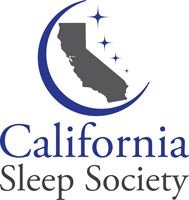Although not a relatively new concept, the shape of medicine is changing. The P4’s of medicine came to fruition around 2008, when Dr. Leroy Hood coined the term, which includes the following concepts.
- Personalized: adapting to the physiological and personal needs of the patient
- Predictive: who will develop a specific condition
- Preventive: If we can predict who will have significant morbidity from a condition, then prevent a condition from occurring or getting worse
- Participatory: The patient is a partner in their care, shared decision-making occurs, and a collaborative health goal is set
These four concepts also should include social determinants of health as a contributing factor and an opportunity to integrate into the model.
According to Hood and Galas1, the healthcare delivery model is changing because technology is shifting, and our ability to use this emerging technology to personalize, predict, prevent, and include the patient in their care is evolving. We all know that, for the most part, healthcare is reactive, which costs the healthcare system millions of dollars each year. Sleep disorders are chronic conditions and require long-term follow-up, similar to other chronic conditions such as diabetes and hypertension. Thus, if we can work to identify and prevent sleep problems from occurring, patients and the economy might benefit.
Preventative healthcare services are not used as frequently as they should. 2 According to Levine, it is not for lack of understanding but rather a lack of implementation of preventative evaluations and services. It is huge if we think about a pediatric patient who exhibits the anatomy predisposing them to OSA and unrecognized symptoms, which could be helped proactively prevent long-term sequela. However, we know that most healthcare professionals outside the sleep realm do not have the necessary education in sleep and associated disorders; therefore, they do not ask sleep-related questions. Practice gaps relating to sleep health in primary care exist.3
The article by Boffetta 4 describes in occupational medicine how prediction might be used to stratify occupational hazards based on worker profiles. This prediction model may lead to assessing at-risk populations for a specific job type, such as pilots, truck drivers, and medical personnel. Perhaps this could be implemented for shift-work sleep disorders.
Lim et al 3 beautifully describe how the P4 approach aligns with patients with OSA. Their article includes a great overview of the differences, including anatomical and physiological, individual characteristics (ethnicity, gender, and clinical presentation), molecular signatures, and consequences, which can differ from patient to patient. This article also provides a good overview of the gaps and continued research which is required to begin to integrate the P4’s into clinical sleep care. Technology, big data, OMICS, and new analytics may help to drive a more personalized approach.
So, what do these mean for the field of sleep medicine? It has been clear from the increasingly innovative drive to have more treatment options for patients with obstructive sleep apnea that we are leaning towards a more personalized approach to the care of OSA patients. As treatment options emerge, so will the understanding of who will benefit from which treatment. In addition, it may be that by including the patient more in their participation of care, we might be more successful in the long run, i.e. care that fits the patient, not fit the patient to the care. We already know that one size treatment does not fit all. We are also seeing patients taking more charge of their choices for treatment. In addition, the proliferation of consumer sleep technology and use speaks to the concern of the public regarding their sleep health. 6
Just think, if sleep inquiry was included in all medical visits, we might be able to prevent some of the outcomes associated with poor sleep and sleep-related disorders. The healthcare system may see significant cost savings and improved quality of life for patients with sleep disorders.
Over the years, we have seen sleep medicine adapt to technological changes, from paper to digital, in-lab to home sleep testing, and new therapies for treating narcolepsy and OSA. It will be interesting to see how the next-generation of innovation will be able to integrate the P4’s into sleep health.
- Hood L. & Galas D. (2008). P4 Medicine: Personalized, Predictive, Preventive, Participatory: A Change of View that Changes Everything: A white paper prepared for the Computing Community Consortium committee of the Computing Research Association. http://cra.org/ccc/resources/ccc-led-whitepapers/
- Levine S, Malone E, Lekiachvili A, Briss P. Health Care Industry Insights: Why the Use of Preventive Services Is Still Low. Prev Chronic Dis 2019;16:180625. DOI: http://dx.doi.org/10.5888/pcd16.180625
- National Sleep Foundation (ND) Professional Practice Gaps in Sleep Health https://www.sleephealthjournal.org/content/professionalpracticegaps
- Boffetta P, Collatuzzo G. Application of P4 (Predictive, Preventive, Personalized, Participatory) Approach to Occupational Medicine. Med Lav. 2022;113(1):e2022009. Published 2022 Feb 22. doi:10.23749/mdl.v113i1.12622
- Lim DC, Sutherland K, Cistulli PA, Pack AI. P4 medicine approach to obstructive sleep apnea. Respirology. 2017;22(5):849-860. doi:10.1111/resp.13063
- Khosla S, Wickwire EM. Consumer sleep technology: accuracy and impact on behavior among healthy individuals. J Clin Sleep Med. 2020;16(5):665-666. doi:10.5664/jcsm.8450

